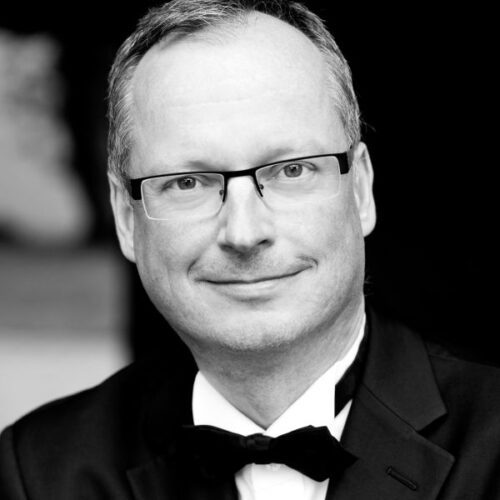Additional Information
This Sunday at the Sala Rossa, this Suoni per il Popolo regular plans to explore every nook and cranny of the naked guitar, with no artifice except his own gestures on the metal strings.
Here, he explains his approach to PAN M 360, to prepare us for this encounter with his audience in the context of a triple programTransplanted to Holland over three decades ago, Scottish guitarist Andy Moor began his musical journey in Edinburgh, notably with Dog Faced Hermans, a post-punk band steeped in traditional music and free improvisation. At the turn of the ’90s, he was recruited by the Dutch band The Ex, famous for their mixtures of hardcor punk, free improvisation and unprecedented sound experiments. In 1995, alongside The Ex, he founded Kletka Red, alongside Tony Buck Joe Williamson and Leonid Soybelman, this time hybridizing traditional klezmer, Greek and Russian music.
Over the years, he has collaborated with many musicians from different horizons. A seasoned improviser, he returns to Suoni per il Popolo to play like one man with his guitar, in a program shared with Chicago experimental and multidisciplinary artist Damon Locks and Montreal improviser Markus Floats.
PAN M 360: What kind of performance are we talking about this time in Montreal?
ANDY MOOR: I’m actually coming to play solo, an approach I’ve developed over the last two or three years: improvising on guitar, just on guitar. There are no effects or anything.
PAN M 360: No electronic filters? No effects? Just a guitar without pedals? Can you give us some clues?
ANDY MOOR: When I first started playing guitar, I sometimes used an echo box. It could also have been a tape recorder – a tape that ran in circles, creating an echo effect. But after a while, when I listened to the recordings again, I always found that it had a nice effect, but you lost the presence of the guitar sound, which became a little fuzzy, a little soft. So this effects-free approach grew over time.
PAN M 360: Have you ever used effects pedals or other electro-acoustic filters?
ANDY MOOR: I never used effects pedals, maybe a little distortion back in the day. But there came a time when I thought I really didn’t need any extra effects. However, when I listen to other guitarists playing with effects, sometimes I like it. But most of the time, I get the impression that there’s some kind of filter or wall between the effects and the actual sound of their instrument.
Very often, guitarists use 10, 15 or 20 pedals. Yes, of course, once their sound has gone through all that, I don’t know, it ends up losing presence and dynamics. And it becomes a bit of a mush in some cases, whereas in other cases, some people manage to use the pedals well. Not really my taste. For me, at least, it feels like I’m losing more than I’m gaining. So instead of using pedals, I use objects to create unusual sounds on the strings.
PAN M 360: Do you see a lot of possibilities?
ANDY MOOR: It’s amazing the amount of sounds you can produce this way. To this day, I’m still surprised by some of the sounds that come out of the instrument. To bring out these sounds, I use a kind of preamplifier that slowly compresses the sound, so that the smallest change or movement can be heard very, very clearly. It also makes the body of the guitar react, if you touch it anywhere. Yes, I work a lot with low frequencies, re-tuning the strings very low. And really strange things happen when you do that, because the sound remains very present and very clear. You can really see and hear what’s going on.
PAN M 360: When you retune the instrument, is it a microtonal exploration, i.e. are you looking for other types of intervals than the “normal” scales?
ANDY MOOR: It’s very microtonal indeed. I don’t tune precisely, I go by ear, and I work primarily with the sound of the instrument.
PAN M 360: Are there any other reasons for excluding effects via pedals or other electronic tools?
ANDY MOOR: Part of the reason may lie in my playing style in the bands I’ve been involved with, which is very rhythmic guitar. There are no guitar solos in The Ex, for example, there may be the simple melody of a theme, but nothing more. The guitar’s rhythm accompanies that of the drums, and the two instruments sort of cross paths. So we’ve never really felt the need to do more than that. It’s just a question of simplicity, not purism. Everyone in the band has a simple element to produce. In a way, that’s what makes it all work.
PAN M 360: It’s interesting: part of your personality aims to keep things simple, but at the same time, you know, you explore complexity in other musical dimensions of your expression. Not many artists maintain this tension between simplicity and exploration.
ANDY MOOR: Yes, that’s true, but the addition of simple lines can produce something complicated because there are five of us working simultaneously. And the way it locks in at the end can sometimes generate very strange polyrhythmic discourses, because it’s not composed by one person. It’s all our ideas in one poem. And that’s, that’s what makes it so exciting.
PAN M 360: Sunday night’s program also features a duet with Damon Locks.
ANDY MOOR: Actually, I’m playing solo, but we’re also going to be doing a kind of collaboration. I’ve known Damon since the ’90s, when we toured together with a band called Trenchmouth, Damon Locks was the lead singer.
PAN M 360: More on Sunday night!
























